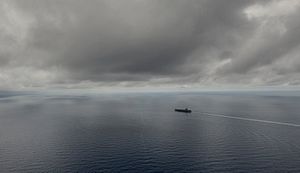John Bradford, Greg Adams, and Sean Quirk have made a significant contribution on how multilateralism and a rules-based order work in practice. While detailed in application, this work has much broader implications for how we think about U.S. interests in the Western Pacific, and how we evaluate the causes of conflict between the United States and China.
Bradford and his co-authors frame the pursuit of multilateralism in terms of the common fight against three opponents: natural disaster, pirates, and terrorists. In each of these cases, the foe threatens the common interests of all of the states of Southeast Asia, and in each case successful action requires international cooperation.
The article discusses some of the downsides of multilateral action, including a dilution of training in skills associated with difficult, high-intensity operations. Long story short, the interoperability issues that plague multilateral action can preclude the development of high-level skills training. Bradford et al lay out some potential remedies for these problems, including most notably the Cooperation Afloat Readiness and Training (CARAT) exercise series, which provides a framework for advanced bilateral and multilateral training exercises between the United States and various partners in Southeast Asia.
The article allows, correctly, that while an increase in the complexity of the training exercises improves the quality of skills developed, it tends to exclude navies with lower levels of interoperability from participation. In particular, China (which has only basic levels of interoperability with most ASEAN and Western navies) gets left out of one of the basic means of conveying and developing the practice of multilateral maritime rules.
Why does this matter? The steps that the United States and its partners take in the South China Sea (and elsewhere) to build multilateral understandings of, and expertise in, appropriate maritime procedures help constitute the thing that many refer to as “the rules based order.” Indeed, the usefulness of establishing multilateral maritime norms in Southeast Asia depends, to great extent, on whether there’s any value at all to constructing this “rules based order.” A recent exchange in the National Interest examined this question, with the skeptical Patrick Porter arguing that an international order based on rules enforcement is seductive but pointless. Butch Bracknell argued the opposite case, noting that even a selectively enforced international order still constitutes an order.
It’s not as if there’s a stark, binary choice between “building skills with partners” and “building a rules based order.” Lots of activities can do both at the same time. However, at the margins that difference can matter, as the questions of Chinese participation in these exercises suggests. In my next column, I evaluate how norms and procedures of multilateral military exercises can help create, and affect the constitution of, a “rules based order.”

































